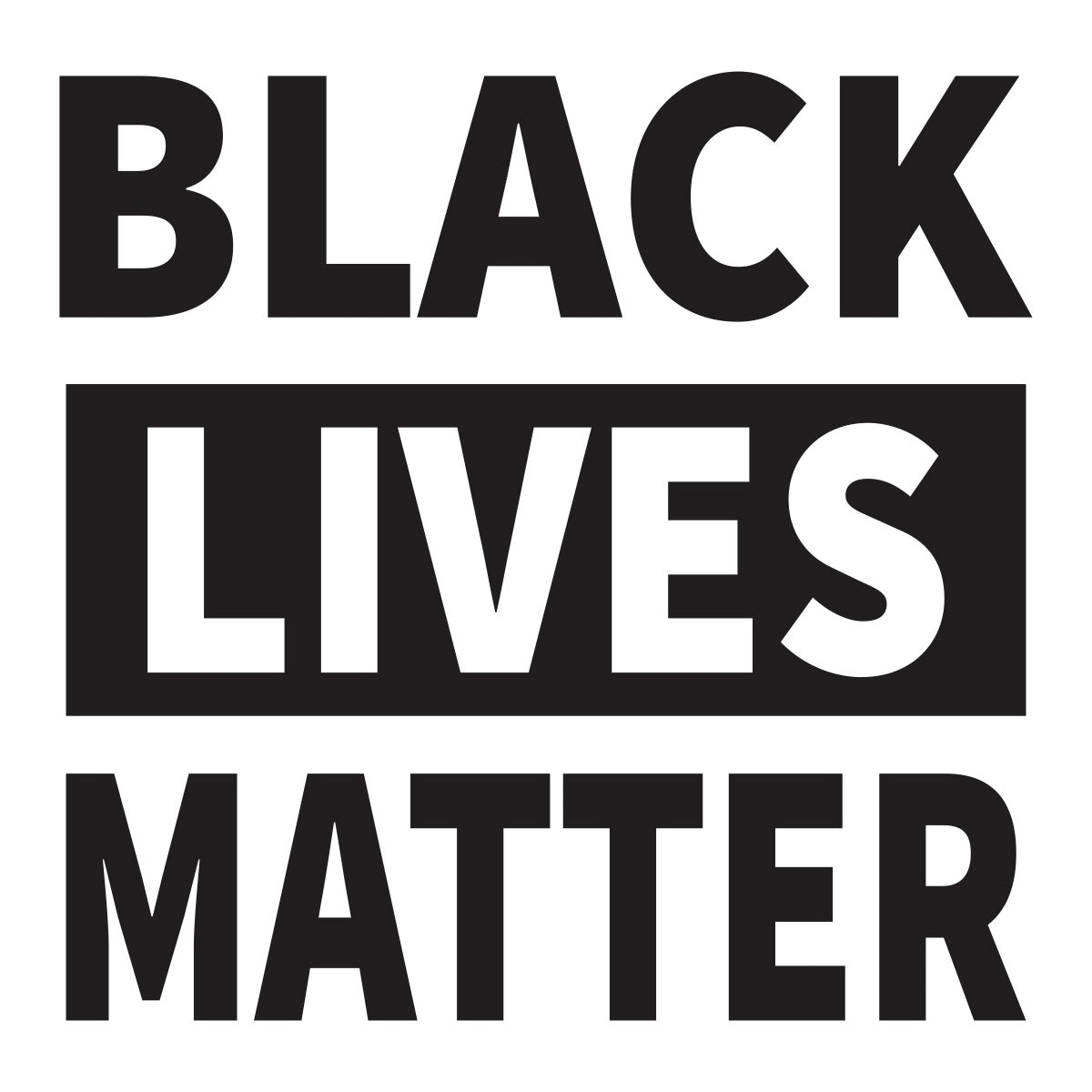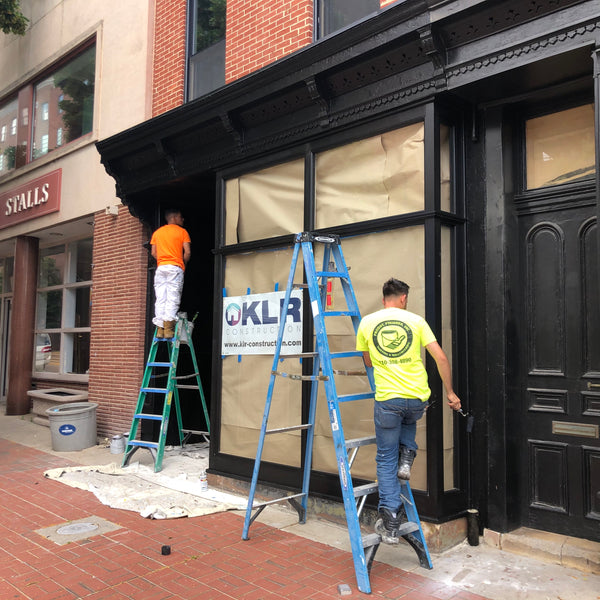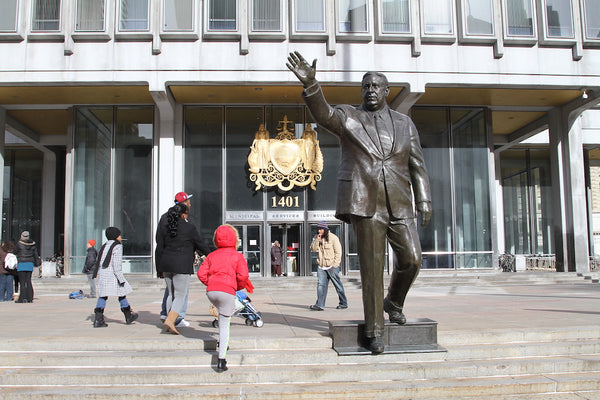
Black Lives Matter
All of us at Infinite have been affected by the recent mobilization of the Black Lives Matter movement following the recent murder of George Floyd. We have seen what is happening across the country (and the world), as tens of thousands (possibly millions) take to the streets and unleash years of anger and frustration over the treatment of our Black population by law enforcement. While there have been protests in every state in the United States, and in almost every major city, Philadelphia has seen a huge amount of protests, clashes with police, along with well-publicized vandalism and looting. Many of our neighbors on South Street and down the street from us on Fabric Row have had their businesses vandalized, and we join them in denouncing the violence that has affected many small businesses in the area. But while the property damage and looting has been overshadowing much of the narrative, we must address the legacy of racism that set the stage for where we are—especially in Philadelphia.
The Rizzo Years
As Philadelphians, many of us have parents (or grandparents) who were there when white supremacy was codified into law by Police Commissioner, and later Mayor, Frank Rizzo. Through his time on the police force in the ‘60s to his years as mayor through the ‘70s, Rizzo embarked on a well-documented (and celebrated, by many) history of actions primarily targeting the city’s Black population. From strip searching Black Panther leaders in front of the press to encouraging the city to “Vote White” while campaigning for his third term.
During his tenure, the Philadelphia police department became more and more powerful, while unfairly targeting Blacks—by design. But Rizzo’s brutal legacy is more than just that:
"After he became mayor in 1972, the Philly police department's budget climbed steadily, and in negotiations, Rizzo granted cops pay hikes and extremely generous pension plans that allowed many to retire with full benefits after 25 years. Such benefits might be easier to bear with a larger tax pool, but in a city with a shrinking population and tax base, allowing thousands of officers to retire early at age 45 proved a heavy burden. A few years ago, Philadelphia Magazine estimated that thanks to pension requirements negotiated under Rizzo and his predecessor, James Tate, 12,000 retired officers and their beneficiaries are owed today between $1.2 and $1.7 million each."
Current Philadelphia District Attorney (and frequent suer of police) Larry Krassner put it best when he says, "Rizzo kidnapped the fucking city, that's what he really did."
The MOVE Bombing
While Rizzo ended his last year as mayor in 1980, the legacy of confrontational and combative policing of the Black community reached a boiling point five years later, with the bombing of the MOVE house. In 1985, an armed standoff with the black liberation group resulted in the Philadelphia police firing over ten thousand rounds of ammunition into the row home before dropping explosives on it from a police helicopter. Eleven people were killed and sixty-five houses were destroyed as militarized police burned a residential neighborhood to the ground.
After the smoke settled and the hoses were turned off, 61 homes were gone. And 11 lives were lost including 5 children and MOVE’s founder John Africa. An entire city block and its inhabitants were devastated—leaving the city of Philadelphia with endless questions to answer. pic.twitter.com/PHRNhgZ9yT
— PhillyWeekly (@PhillyWeekly) May 3, 2019
Our racist policing that was long ago made standard practice created a system of such overwhelming inertia that meaningful reform has been difficult. With that history, the BLM protests in Philadelphia have been transformative. The recent removal of the Frank Rizzo statue is symbolic, yes, but it symbolizes a small step forward: a move toward addressing the racial injustice that has long been at the heart of the City’s policing practices, and the repudiation of a Philadelphia icon well-known for his brutalization of marginalized communities, and the Black population in particular. As a bonus, we’ve also seen the Frank Rizzo mural (“Philadelphia's most commonly defaced piece of public art") removed in South Philly and painted over.

Philadelphia Now
But while we pull down monuments celebrating the polarizing icons of Philadelphia’s past, we struggle with the police of the present. During protests in Philadelphia, Staff Inspector Joseph Bologna Jr, who has a history of misconduct and is linked to past corruption scandals, was brought up on aggravated assault charges for violence against protestors. As he turned himself in to face charges, he was cheered on by over 100 fellow police officers.
Baltimore and the Future
And while Philadelphia continues to mobilize, we are finishing work on our new studio in Baltimore, a city where everyone carries the memory of Freddie Gray. Gray was a black man who, in April of 2015, died in police custody as a direct result of a “rough ride” in a police van after arrest. Following his funeral, police clashed with protesters, resulting in several days of violence referred to now by the white community as “the riots” and the Black community as “the uprising.” The resulting investigation into the actions of the police resulted in the Federal government putting the Baltimore police department under consent decree, which it still operates under today. We are setting up roots in a city where these wounds are still fresh.

We know statements of solidarity from businesses can often be hollow, but we also believe silence is not an option. We are a business, but also a group of individuals who have a responsibility to collectively add our voices to those shouting out for justice. We stand by those who fight to end the legacy of white supremacy, and join all those who are rising up to say: BLACK LIVES MATTER.


Comments
Leave a comment